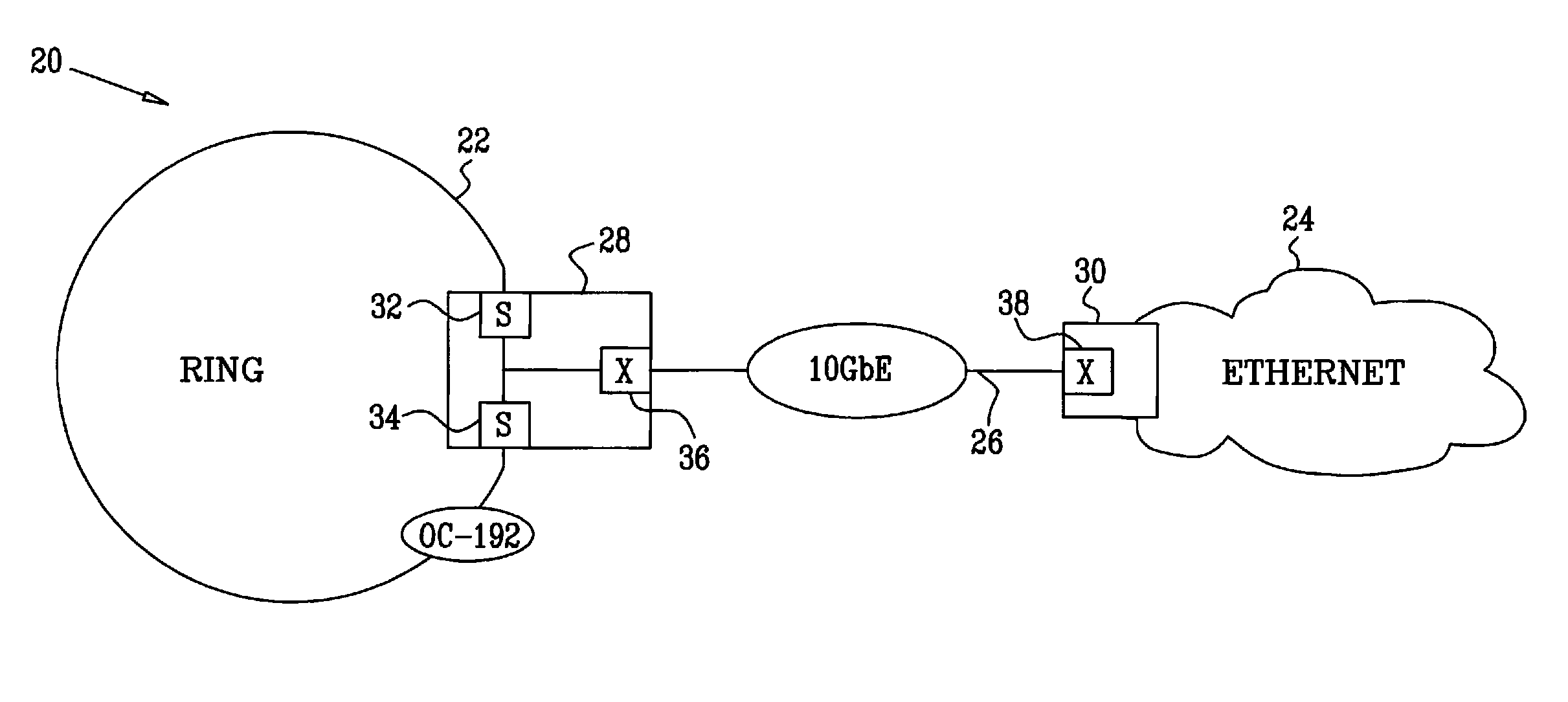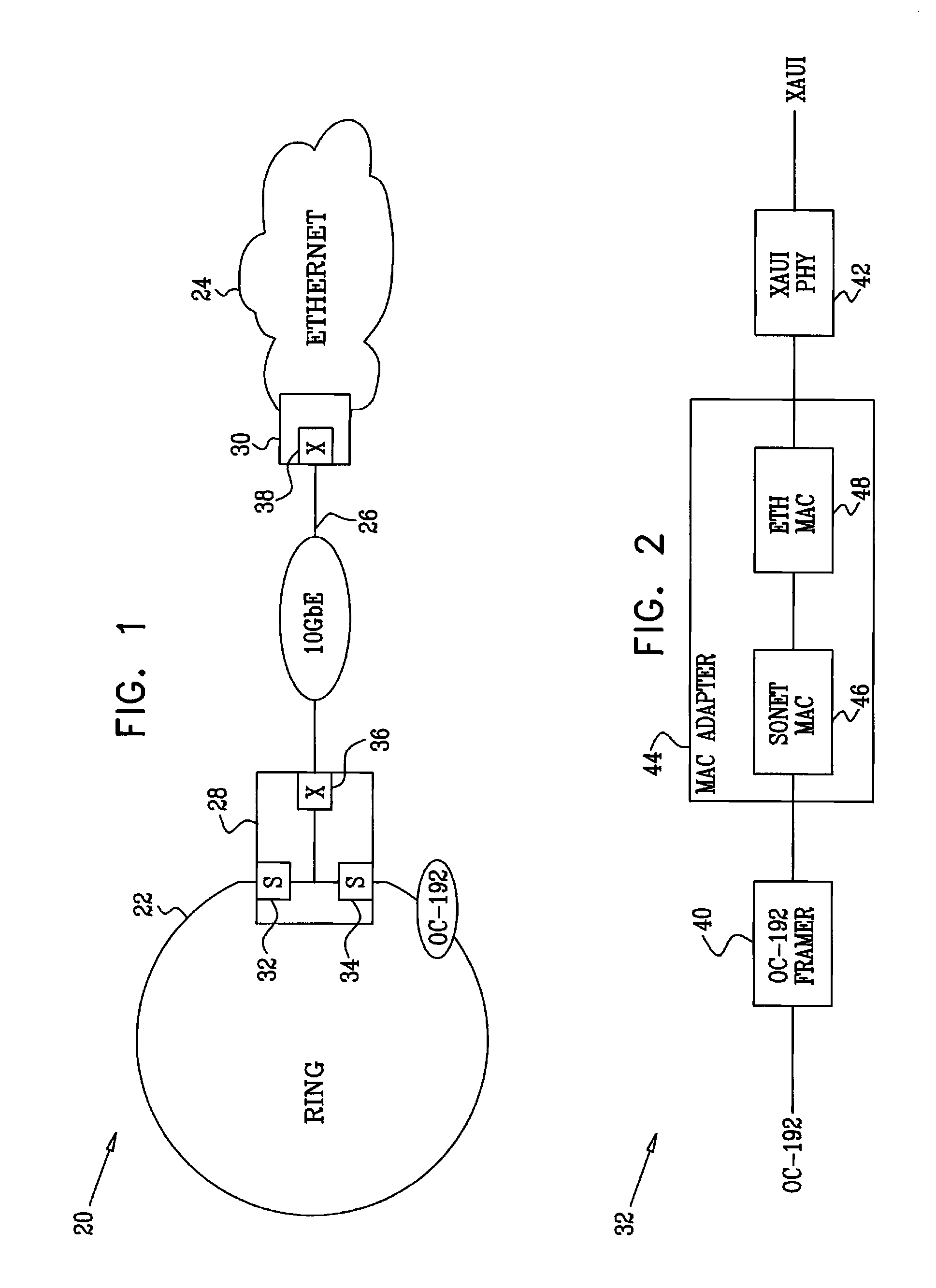Interface between a synchronous network and high-speed ethernet
- Summary
- Abstract
- Description
- Claims
- Application Information
AI Technical Summary
Benefits of technology
Problems solved by technology
Method used
Image
Examples
Embodiment Construction
[0043]FIG. 1 is a block diagram that schematically illustrates a communication network system 20, in accordance with an embodiment of the present invention. System 20 in this example comprises a ring network 22 and a packet network 24. The ring network operates as a synchronous optical network in accordance with the SONET or SDH standard at the OC-192 (STM-64) line rate. The packet network is an Ethernet network. Networks 22 and 24 are connected by a 10 Gb / s Ethernet (10 GbE) link 26 between nodes 28 and 30.
[0044] Node 28 comprises “east” and “west” synchronous optical network interfaces 32 and 34, which connect to ring network 22 in accordance with the applicable synchronous optical network standard. (The terms “east” and “west” are used here solely for the sake of convenience and have no geographical meaning.) In an exemplary embodiment, network 22 is a bi-directional network, such as a Resilient Packet Ring (RPR) network, but the principles of this embodiment are applicable in c...
PUM
 Login to View More
Login to View More Abstract
Description
Claims
Application Information
 Login to View More
Login to View More - R&D
- Intellectual Property
- Life Sciences
- Materials
- Tech Scout
- Unparalleled Data Quality
- Higher Quality Content
- 60% Fewer Hallucinations
Browse by: Latest US Patents, China's latest patents, Technical Efficacy Thesaurus, Application Domain, Technology Topic, Popular Technical Reports.
© 2025 PatSnap. All rights reserved.Legal|Privacy policy|Modern Slavery Act Transparency Statement|Sitemap|About US| Contact US: help@patsnap.com



